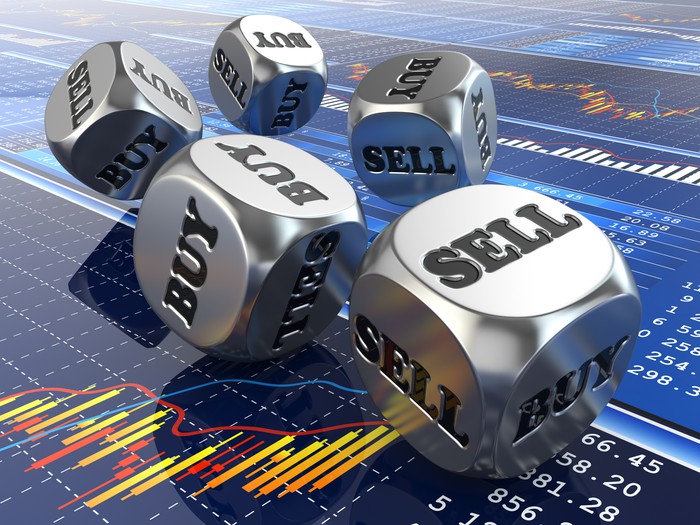Anheuser-Busch InBev (BUD +1.24%) reported financial results on Feb. 28. In the fourth quarter, sales and profits stabilized for the world's largest brewing company, which has been trying to delever its balance sheet following a string of costly acquisitions.
Anheuser-Busch InBev results: The raw numbers
|
Metric |
Q4 2018 |
Q4 2017 |
Year-Over-Year Change |
|---|---|---|---|
|
Revenue |
$14.25 billion |
$14.60 billion |
(2%) |
|
Underlying profit |
$2.50 billion |
$2.45 billion |
2% |
|
Underlying EPS |
$1.26 |
$1.24 |
2% |
Data source: Anheuser-Busch InBev Q4 2018 earnings release. Underlying profit adjusts for nonrecurring items and discontinued operations, as well as the impact of hedging and hyperinflation.
What happened with Anheuser-Busch InBev this quarter?
Total volumes inched up 0.3%, as a 1.2% increase in AB InBev's beer volumes was mostly offset by a 4.9% decline in its nonbeer volumes. Revenue per hectoliter, meanwhile, rose 4.9%.
AB InBev's premiumization strategy continues to gain steam, fueled by the growth of its higher-end brands. Corona is a particularly powerful growth driver in this regard. Corona's global revenue jumped 17.6%, including a 28.5% increase outside of its core market of Mexico. "Corona currently has a market share of 3% or higher in just three countries where we own the brand," CEO Carlos Brito said during a conference call with analysts. "With the brand growing double-digits globally, we believe it's still far from reaching its full potential."
In all, organic revenue, which excludes the impact of acquisitions and divestitures, grew 5.3%, to $14.3 billion.
This top-line growth, combined with AB InBev's cost reduction initiatives, is helping to boost the beer giant's profit margins. AB InBev's normalized EBITDA -- which excludes nonrecurring items and discontinued operations -- went up 10% on an organic basis to $6.2 billion, as EBITDA margin improved 190 basis points to 43.3%.
Click here for the latest earnings call transcript for AB InBev.

Anheuser-Busch InBev is striving to obtain a balance between its growth and debt-reduction plans. Image source: Getty Images.
Looking forward
AB InBev intends to use much of this profit to pay down its massive debt load, which ballooned to more than $100 billion after its acquisition of SABMiller.
Earlier this year, the company replaced a sizable portion of its near-term bond maturities with longer-dated debt, thereby reducing the pressure to refinance in the coming years. Management noted that this would allow AB InBev to pay off the debt maturing during this time with free cash flow.
All told, AB InBev's net debt-to-EBITDA ratio improved to 4.6 at the end of 2018, down from 4.8 at the end of 2017. The company is targeting a net debt-to-EBITDA ratio of below 4 by the end of 2020, with a long-term goal of 2. "And we will prioritize debt repayment in order to meet this objective," CFO Felipe Dutra said.
As for 2019, AB InBev expects to deliver "strong revenue and EBITDA growth," as it works to achieve top-line growth that's more balanced between revenue per hectoliter and volumes.



